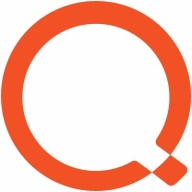

Microsoft Configuration Manager and KACE Systems Management Appliance compete in the IT management tools category. While SCCM is more entrenched in larger enterprises due to its integration with the Microsoft ecosystem, KACE SMA is favored for its ease of customization and cross-platform compatibility, especially in diverse infrastructures.
Features: SCCM offers robust support for software deployment, Windows updates management, and system configuration across devices, with patch management and compliance reporting as standout features. KACE SMA excels in asset inventory management, cross-platform patch management, and customizable software deployment through intelligent scripts, providing solutions for non-Microsoft platforms.
Room for Improvement: SCCM can improve in resource optimization and support for non-Microsoft platforms. Enhanced integration with different systems and simpler configuration changes could raise its utility. KACE SMA faces challenges scaling for large environments and would gain from simplifying application updates and setup processes. Both products could improve their reporting capabilities and streamline deployment paths.
Ease of Deployment and Customer Service: SCCM, recognized for its cloud integration capabilities, tends to dominate in larger enterprises due to its extensive infrastructure. KACE SMA, however, has an intuitive setup and ease of customization, making it a popular choice for various IT structures. KACE SMA is noted for consistent, high-quality customer support, while SCCM’s support varies based on service agreements.
Pricing and ROI: The cost of SCCM can be high, given licensing needs and SQL Server requirements, yet its extensive features make the investment worthwhile for complex IT environments. KACE SMA impresses with its endpoint-based, straightforward licensing model, making it cost-effective for smaller institutions. Both systems contribute positively to ROI by enhancing IT efficiency, with KACE often highlighted for its affordability in smaller structures.
The return on investment is seen in the quick access to information, good inventory management, and efficient systems management.
I would rate the customer support for Quest KACE Systems Management Appliance (SMA) as a 10.
The customer service is very good, providing quick customer support in Spanish.
The product is very scalable as it supports 10,000 thousand endpoints with just one appliance.
We have outgrown the size of one KACE appliance and are now running two.
The product is suitable for our size, handling 800 devices.
There were misconfigurations by our team rather than issues with the product itself.
Currently, we have to go into each org to deploy applications when we need them all across the university.
The user interface needs improvement as customers have mentioned they do not like the interface since it is not an SMA-based interface.
My experience with pricing, setup cost, and licensing for Quest KACE Systems Management Appliance (SMA) is that, hands down, it beat all of the others in simplicity and pricing.
The pricing is in the middle range of the market, not too expensive but not the cheapest either.
The setup cost is considered sufficient.
Scripting has saved us hundreds of hours over the years when patching these vulnerabilities compared to how we did it before.
The most valuable features include simplicity, which makes systems management easier and faster, especially for device management.
The product valuable for deployment recovery.


KACE Systems Management Appliance offers integration capabilities, efficient image deployment, and comprehensive asset management. It supports centralized management across diverse devices and locations, simplifying IT processes and enhancing security.
KACE Systems Management Appliance provides single-pane visibility for endpoint management, mass software deployment, automated patch management, robust scripting, and detailed inventory tracking. It streamlines IT management and improves cyber-security compliance through remote software updates and centralized IT request handling. Despite struggles with scalability and the need for interface improvements, it enables efficient device imaging, script automation, and network management through detailed reporting. Organizations find it effective for software deployment, asset management, and endpoint monitoring, serving thousands of IoT devices and desktops.
What are the key features of KACE Systems Management Appliance?In healthcare, KACE Systems Management Appliance is used for maintaining device compliance and security standards. Educational institutions benefit from its capabilities to manage large numbers of endpoints across campuses. In finance, it aids in strict compliance requirements through automated patch management and detailed reporting. Retail sectors leverage its asset management features to streamline operations across numerous locations.
Microsoft Configuration Manager streamlines IT management with features such as software deployment, patch management, and automation, centralizing operations for Windows environments. Integration with Microsoft products allows efficient oversight of workstations and servers.
Microsoft Configuration Manager provides comprehensive IT management, offering software deployment, patch management, and application pushing. Automation reduces manual tasks, ensuring consistency across systems. Centralized management enables standardized OS deployments, application updates, and configuration integrity. Integration with Microsoft products facilitates seamless operations, while hardware and software inventory, compliance reporting, and remote control functions enhance IT management. Users seek improvements in application deployment for those without deep scripting knowledge and desire better WSUS control, PowerShell and Intune integration, Linux compatibility, and user interface enhancements. Performance improvements are requested for remote user management and third-party application support.
What features enhance Microsoft Configuration Manager?Microsoft Configuration Manager is widely implemented in organizations to manage Windows workstations and servers. It is essential for deploying operating systems and applications, managing software updates, and conducting hardware and software inventories. The tool is crucial for endpoint and configuration management, ensuring compliance, and automating processes like patching and vulnerability management. Industries such as finance, healthcare, and education rely on Microsoft Configuration Manager to keep systems secure and operational, adapting it to address their specific needs and challenges in maintaining diversified IT environments.
We monitor all Patch Management reviews to prevent fraudulent reviews and keep review quality high. We do not post reviews by company employees or direct competitors. We validate each review for authenticity via cross-reference with LinkedIn, and personal follow-up with the reviewer when necessary.